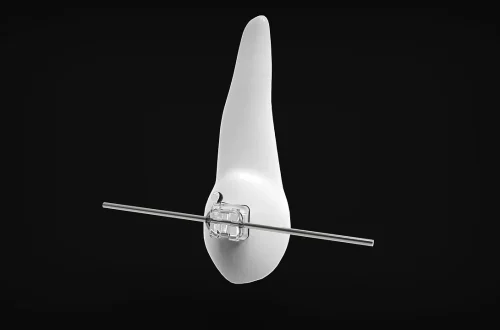
Understanding Shedding Cat Nails: Care Tips for Cat Owners
Taking care of a cat entails a multitude of responsibilities, one of which is ensuring their nails remain healthy and well-maintained. While many cat owners focus on feeding, grooming, and providing companionship, the state of a cat’s nails often goes unnoticed. Shedding cat nails, a natural part of their grooming process, can be perplexing for new and seasoned cat owners alike. Understanding the ins and outs of this phenomenon is essential for maintaining your feline’s overall health and comfort.
Cats, like many animals, have an instinctual behavior of shedding their nails to keep them sharp and functional. This process involves the outer layer of the nail peeling away, which can sometimes lead to concerns about whether it is normal or indicative of a larger issue. Nail health is crucial not only for the cat’s ability to scratch and climb but also for their overall well-being. A cat’s nails can reveal a lot about their health, including signs of stress or illness. This article delves into the nuances of shedding cat nails, providing valuable insights and tips for cat owners on how to care for their furry companions effectively.
Why Do Cats Shed Their Nails?
Understanding why cats shed their nails is the first step in effective nail care. Shedding is a natural process, akin to how humans lose hair or birds shed feathers. Cats have a unique nail structure that consists of a hard outer layer, which can become worn down over time. As the nail grows, the outer sheath may loosen and eventually fall off, revealing a new, sharper nail underneath.
This shedding process serves several purposes. Firstly, it helps maintain the sharpness of the claws, which are crucial for their hunting instincts and climbing abilities. Sharp nails also play a significant role in a cat’s ability to defend themselves. Moreover, regularly shedding old layers of nails can prevent issues like ingrown nails or infections that could arise from damaged or excessively long claws.
Another aspect to consider is the natural behavior of cats. In the wild, cats engage in scratching to mark their territory and keep their claws in optimal condition. By scratching surfaces, they not only shed their nails but also exercise their muscles and maintain their physical health. Thus, providing your cat with appropriate scratching posts can encourage this natural behavior and aid in the shedding process.
Additionally, some factors can influence how often and how much your cat sheds their nails. Age, activity level, and overall health can all play a role. Younger cats tend to shed their nails more frequently due to their higher energy levels and growth rates. Conversely, older cats may shed less, which can sometimes be a sign of health issues. Monitoring your cat’s nail shedding can provide insights into their health and well-being.
Signs of Healthy Nail Shedding
Recognizing the signs of healthy nail shedding is crucial for every cat owner. A healthy cat will typically shed its nails without any discomfort or adverse effects. Observing your cat during their grooming routine can help you identify what normal shedding looks like.
Firstly, healthy nail shedding should not result in bleeding or excessive pain. If your cat seems to be in distress or is excessively licking their paws, it may indicate an underlying issue. Additionally, the shed nails should appear intact and not fractured or rotting. An intact outer layer indicates that the shedding process is functioning correctly.
Another sign of healthy shedding is the presence of new, sharp nails underneath the shed layers. If you notice that your cat’s nails are consistently dull or worn down to the quick, it may suggest that they are not shedding properly or are not receiving enough opportunities for natural wear through scratching.
Regularly inspecting your cat’s paws and nails is essential. Look for any signs of redness, swelling, or unusual growths that could indicate infections or other health concerns. A healthy nail should be smooth and free from any abnormalities. If you notice any concerning signs, consider consulting your veterinarian for a thorough examination.
Furthermore, providing your cat with proper grooming tools can aid in maintaining their nails. Regular trimming, along with providing scratching posts, can help manage the nail shedding process and ensure that your cat’s nails remain healthy and strong.
How to Care for Shedding Nails
Caring for your cat’s shedding nails not only enhances their comfort but also contributes to their overall well-being. Here are several strategies that cat owners can implement to ensure proper nail care.
Firstly, regular trimming is vital. While cats naturally shed their nails, they may not always wear them down sufficiently. Depending on your cat’s activity level, trimming may be necessary every few weeks. Use specialized cat nail clippers to prevent any accidental injuries. If you are unsure about how to trim your cat’s nails, consider consulting a veterinarian or a professional groomer for guidance.
Providing appropriate scratching surfaces is equally important. Invest in various scratching posts and pads made from different materials, such as sisal, cardboard, or carpet. Cats have preferences for certain textures, and offering a variety will encourage them to engage in natural scratching behavior, helping them shed their nails effectively.
Another essential aspect of nail care is regular inspections. Check your cat’s nails and paws frequently for any signs of issues, including overgrowth, irritation, or injury. If you notice anything abnormal, it is best to consult with a veterinarian. They can provide you with tailored advice and treatment options if necessary.
It’s also beneficial to keep your cat engaged in physical activities. Interactive play not only helps maintain a healthy weight but also promotes natural behaviors, including scratching and climbing. Activities such as play with feather wands or laser pointers can encourage your cat to use their claws and shed their nails effectively.
Lastly, consider using nail caps or soft claws that can be applied to your cat’s nails. These are non-invasive and can help protect your furniture while still allowing your cat to engage in natural behaviors.
Common Myths About Cat Nail Shedding
Despite the abundance of information available, several myths about cat nail shedding persist. Understanding and debunking these myths can help cat owners provide better care for their pets.
One common myth is that cats do not need their nails trimmed because they shed naturally. While it is true that cats shed their nails, regular trimming is still essential for their health. Some cats may not shed enough on their own, leading to painful overgrowth. Regular trimming ensures that their nails remain at a healthy length.
Another misconception is that all cats will naturally care for their nails. While some cats are diligent about grooming and scratching, others may not engage in these behaviors as much. This can be due to a variety of factors, including temperament, age, and environment. Therefore, it is crucial for cat owners to take an active role in their cat’s nail care.
Many owners believe that nail caps are harmful to cats. In reality, when applied correctly, nail caps are safe and can provide a protective layer for your cat’s claws, preventing damage to furniture or injury to other pets. It’s essential to monitor your cat after application to ensure they adapt well to the caps.
Lastly, some believe that shedding nails can indicate a serious health issue. While irregular shedding can be a sign of a problem, normal shedding is typically harmless. However, if you notice any significant changes in your cat’s nail behavior, consulting a veterinarian is always a good idea.
In conclusion, understanding the shedding of cat nails is crucial for any cat owner. By recognizing the signs of healthy shedding, implementing effective care strategies, and debunking common myths, you can ensure that your feline friend remains happy and healthy. Remember, regular monitoring and appropriate care can prevent potential issues and promote your cat’s overall well-being.
*Disclaimer: This article is for informational purposes only and does not constitute medical advice. Always consult your veterinarian for health-related concerns.*




